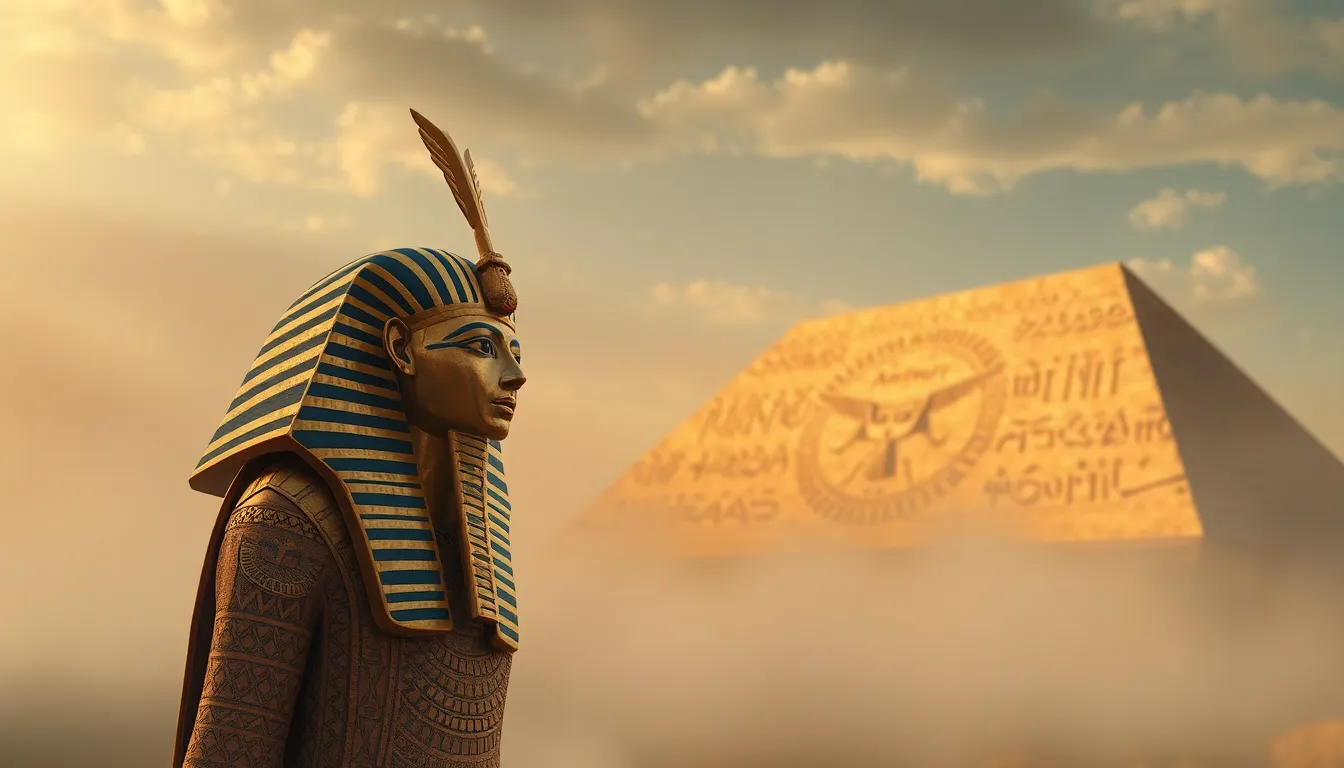The Myths of Pharaoh Akhenaten and the Aten
I. Introduction
Pharaoh Akhenaten, who reigned during the 18th Dynasty of ancient Egypt, is one of the most controversial figures in Egyptian history. His reign, marked by radical changes in religion and art, has intrigued historians and archaeologists for centuries. Central to Akhenaten’s reign was the worship of the Aten, a deity representing the sun’s disk, which became a focal point of his religious reforms.
The significance of the Aten in ancient Egyptian religion cannot be overstated. It was not merely a shift in the pantheon of gods; it represented a transformative moment in the spiritual and cultural landscape of Egypt. This article aims to debunk common myths surrounding Akhenaten and the Aten, offering a clearer understanding of their historical context and significance.
II. Historical Context of Akhenaten’s Rule
To understand Akhenaten’s reign, it is essential to consider the political landscape of ancient Egypt prior to his ascension. Egypt had a rich tradition of polytheistic worship, with a complex pantheon that included gods like Amun, Osiris, and Isis. The priests of these gods wielded considerable power and influence, especially the Amun priesthood in Thebes.
Akhenaten rose to power around 1353 BCE, during a time of relative stability and wealth in Egypt. His transition to monotheism, or rather, his unique form of worship centered around the Aten, marked a significant departure from traditional practices. This period, known as the Amarna period, was characterized by dramatic shifts in both religion and art, showcasing a more naturalistic style and a focus on the royal family.
III. Myth 1: Akhenaten Was the First Monotheist
One of the most pervasive myths is that Akhenaten was the first true monotheist. However, the concept of monotheism in ancient cultures is complex and nuanced.
While Akhenaten promoted the Aten as the supreme deity, he did not entirely reject the existence of other gods. The Aten was more of a representation of the sun’s life-giving power rather than a sole deity in the sense that later monotheistic religions would define God. This perspective can be seen as a form of henotheism, where one god is worshipped without outright denying the existence of others.
Moreover, other ancient cultures also exhibited monotheistic tendencies, such as the worship of the sun in various forms, which predated Akhenaten’s reign. Thus, it is misleading to label him as the first monotheist without considering the broader context of religious practices in ancient civilizations.
IV. Myth 2: Akhenaten Abolished All Other Gods
Another common belief is that Akhenaten abolished the worship of all other deities, particularly Amun. However, evidence suggests otherwise.
- Archaeological findings indicate that worship of traditional gods continued during and after Akhenaten’s reign.
- The Amun priesthood remained a powerful institution, and their temples continued to function, albeit under a modified religious framework.
Additionally, Akhenaten’s reforms did not entirely erase the worship of other gods but rather attempted to reposition the Aten as the central figure in a reformed religious landscape. The impact of Akhenaten’s changes led to tension with the established priesthood, but it did not equate to a complete abolition of other deities.
V. Myth 3: Akhenaten Was a Radical Revolutionary
While Akhenaten is often portrayed as a radical revolutionary, a closer examination reveals a more complex picture.
His societal changes included the establishment of a new capital, Akhetaten (modern-day Amarna), and the promotion of a new artistic style. However, these changes did not completely disrupt the continuity of Egyptian culture. Instead, they were part of a broader evolution of artistic and religious expression that had been developing for centuries.
- Many aspects of traditional art and culture persisted despite the shifts initiated by Akhenaten.
- Akhenaten’s beliefs were influenced by his predecessors, including his father, Amenhotep III, who also emphasized solar worship.
Thus, while Akhenaten’s reign was revolutionary in certain respects, it was not a complete break from the past but rather a reinterpretation of existing traditions.
VI. Myth 4: The Aten Was a Unique God
Many historians and enthusiasts claim that the Aten represented a unique god unlike any other in the Egyptian pantheon. This assertion overlooks the context of ancient Egyptian polytheism.
The Aten shares similarities with other solar deities, such as Ra and Horus, who were also associated with the sun and its life-giving properties. The Aten can be seen as an extension of these earlier beliefs rather than a wholly original concept.
Furthermore, the Aten functioned more as a symbol of divine power and presence rather than a distinct entity with a unique mythology. This perception aligns with the broader understanding of gods in ancient Egypt, where deities often represented natural phenomena and abstract concepts.
VII. The Legacy of Akhenaten and the Aten
Akhenaten’s legacy is multifaceted, shaped by how he was perceived both in his time and in modern scholarship. Initially, he was viewed as a heretic, and his reforms were largely reversed after his death.
In contemporary contexts, there has been a revival of interest in Akhenaten and the Aten. Scholars have begun to reassess his contributions to Egyptian history, emphasizing the complexities of his reign.
- Akhenaten’s depiction in art and literature often reflects the conflicting views of his rule.
- Modern media representations, from documentaries to films, have contributed to the ongoing fascination with his life and reign.
VIII. Conclusion
In summary, the myths surrounding Pharaoh Akhenaten and the Aten are numerous and often oversimplified. By debunking these myths, we gain a clearer understanding of Akhenaten’s true legacy and the religious landscape of ancient Egypt.
Understanding the historical context and the nuances of Akhenaten’s reforms is crucial for appreciating the complexity of ancient Egyptian religion. As interest in this period continues to grow, further research will undoubtedly shed more light on the enigmatic figure of Akhenaten and his worship of the Aten.




